

Euler's Formula
by
Amanda Newton
The Swiss mathematician physicist, Leonhard Euler, is known for several findings and works in the world of mathematics and physics. In 1750, Euler derived the formula F+V=E+2 which holds for all convex polyhedra. The variables F, V, and E represent faces, vertices, and edges of a polyhedron respectively. This can be seen with ease for the five regular polyhedra shown below.

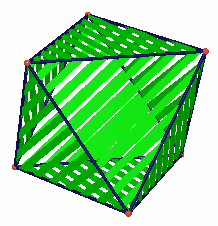
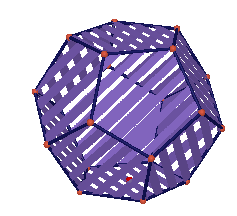
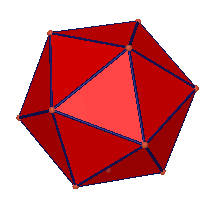
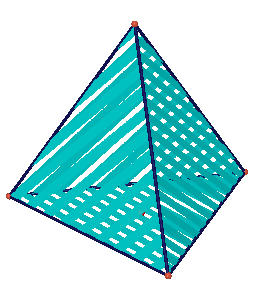


This may not be very surprising to some and may only look like a coincidence. Let's examine a few more polyhedra. First let's take a look at the truncated icosahedron, the figure is made of 20 regular pentagons and 12 regular hexagons. This may look more familar to some than the polyhedron above (it's a soccerball). The polyhedron is made by cutting off 1/3 of each edge of the regular icosahedron and as we will see, satisfies Euler's formula.
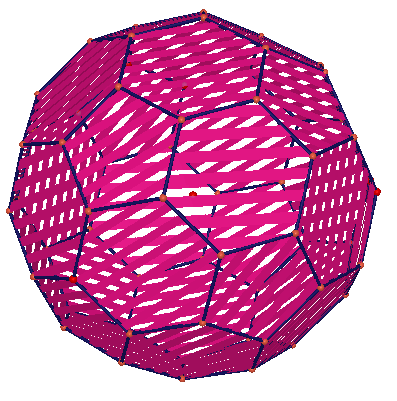
Number of faces: 32 (20 pentagons and 12 hexagons)
Number of Vertices: 60
Number of Edges: 90
F+V=E+2
32+60=90+2
90=90
EULER'S FORMULA WORKS!
Let's take a look at the truncated cube or truncated hexahedron. This is a polyhedron formed similarly to the truncated icosedron: 1/3 of each edge is cut from a cube.
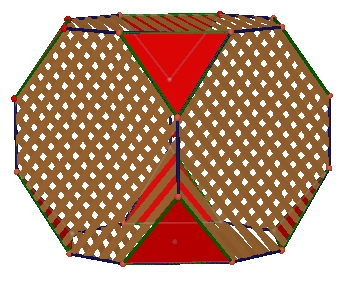
Number of faces: 14 (8 equilateral triangles and 6 regular octagons)
Number of Vertices: 24
Number of Edges: 36
F+V=E+2
14+24=36+2
38=38
EULER'S FORMULA WORKS AGAIN!
Now let's try the Great Icosahedron (non-convex polyhedron):
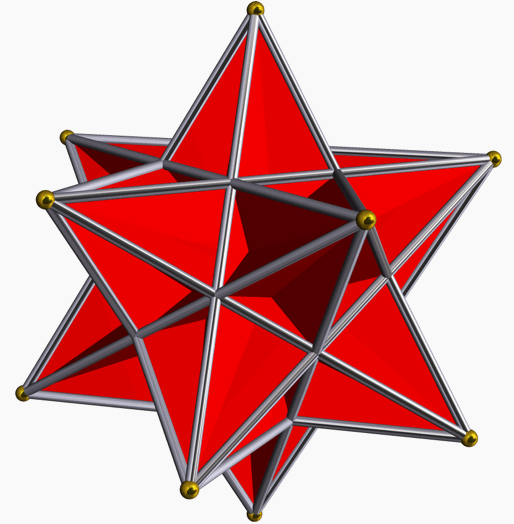
Number of faces: 20
Number of Vertices: 12
Number of Edges: 30
F+V=E+2
20+12=30+2
32=32
EULER'S FORMULA WORKS AGAIN!
Let's take another polyhedra that is not convex. Take a rectagular prism and place a triangular prism on the top of the rectangular prism forming something similar to the picture below:
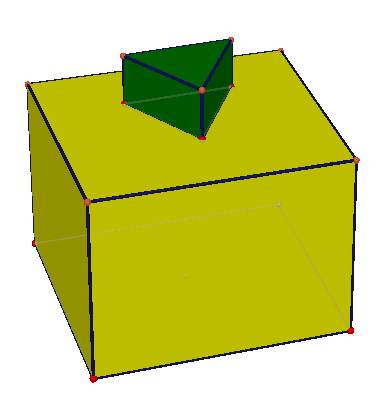
Total number of Faces: 10
6 from the rectangular prism, and 4 from the triangular prism (the bottom is no longer a face)
Total number of Vertices: 14
Total number of Edges: 21
F+V=E+2
10+14=21+2
24=23
EULER'S FORMULA NO LONGER HOLDS!
This case in itself proves that the formula cannot possibly work for EVERY polyhedra, but it does work for some. So then this leads us to the ultimate question: for which polyhedra does the theorem hold? An excellent book dedicated solely to this interesting formula was written by Imre Lakatos called Proofs and Limitations: The Logic of Mathematical Discovery. He considers many proofs as well as counterexamples.